Effects of Aggregate Mesostructure on Permanent Deformation of Asphalt Mixture Using Three-Dimensional Discrete Element Modeling
Abstract
:1. Introduction
2. Materials and Methods
2.1. Materials
2.2. Laboratory Tests
3. Discrete Element Modeling of Asphalt Mixtures
3.1. Discrete Element Modeling
3.2. Mesomechanical Models and Parameters
3.3. Simulation of Uniaxial Creep Test
4. Results and Discussion
4.1. Effect of Aggregate Angularity
4.2. Effect of Aggregate Orientation
4.3. Effect of Aggregate Surface Texture
4.4. Effect of Aggregate Distribution
5. Conclusions
Author Contributions
Funding
Conflicts of Interest
References
- Masad, E.; Muhunthan, B.; Shashidhar, N.; Harman, T. Quantifying laboratory compaction effects on the internal structure of asphalt concrete. Transp. Res. Rec. 1999, 1681, 179–185. [Google Scholar] [CrossRef]
- Masad, E.; Muhunthan, B.; Shashidhar, N.; Harman, T. Internal structure characterization of asphalt concrete using image analysis. J. Comput. Civ. Eng. 1999, 13, 88–95. [Google Scholar] [CrossRef]
- Masad, E.; Somadevan, N. Microstructural finite-element analysis of influence of localized strain distribution on asphalt mix properties. J. Eng. Mech. 2002, 128, 1105–1114. [Google Scholar] [CrossRef]
- Kose, S.; Guler, M.; Bahia, H.; Masad, E. Distribution of strains within hot-mix asphalt binders: Applying imaging and finite-element techniques. Transp. Res. Rec. 2000, 1728, 21–27. [Google Scholar] [CrossRef]
- Wang, L.B.; Frost, J.D.; Shashidhar, N. Microstructure study of westrack mixes from x-ray tomography images. Transp. Res. Rec. J. Transp. Res. Board 2001, 1767, 85–94. [Google Scholar] [CrossRef]
- Wang, L.; Wang, Y.; Mohammad, L.; Harman, T. Voids distribution and performance of asphalt concrete. Int. J. Pavements 2002, 1, 22–33. [Google Scholar]
- You, Z.; Adhikari, S.; Kutay, M.E. Dynamic modulus simulation of the asphalt concrete using the X-ray computed tomography images. Mater. Struct. 2009, 42, 617–630. [Google Scholar] [CrossRef]
- Ding, X.; Ma, T.; Gu, L.; Zhang, Y. Investigation of surface micro-crack growth behavior of asphalt mortar based on the designed innovative mesoscopic test. Mater. Des. 2020, 185, 108238. [Google Scholar] [CrossRef]
- Chang, K.-N.G.; Meegoda, J.N. Micromechanical Ssimulation of hot mix asphalt. J. Eng. Mech. 1997, 123, 495–503. [Google Scholar] [CrossRef]
- Rougier, E.; Knight, E.E.; Broome, S.T.; Sussman, A.J.; Munjiza, A. Validation of a three-dimensional finite-discrete element method using experimentalresults of the Split-Hopkinson pressure bar test. Int. J. Rock Mech. Min. Sci. 2014, 70, 101–108. [Google Scholar] [CrossRef]
- Buttlar, W.G.; You, Z. Discrete element modeling of asphalt concrete: Microfabric approach. Transp. Res. Rec. J. Transp. Res. Board 2001, 1757, 111–118. [Google Scholar] [CrossRef]
- You, Z.; Buttlar, W.G. Discrete element modeling to predict the modulus of asphalt concrete mixtures. J. Mater. Civ. Eng. 2004, 16, 140–146. [Google Scholar] [CrossRef]
- You, Z.; Liu, Y.; Dai, Q. Three-dimensional microstructural-based discrete element viscoelastic modeling of creep compliance tests for asphalt mixtures. J. Mater. Civ. Eng. 2011, 23, 79–87. [Google Scholar] [CrossRef]
- Abbas, A.; Masad, E.; Papagiannakis, T.; Harman, T. Micromechanical modeling of the viscoelastic behavior of asphalt mixtures using the discrete-element method. Int. J. Géoméch. 2007, 7, 131–139. [Google Scholar] [CrossRef]
- Liu, Y.; Dai, Q.; You, Z. Viscoelastic model for discrete element simulation of asphalt mixtures. J. Eng. Mech. 2009, 135, 324–333. [Google Scholar] [CrossRef]
- Chen, J.; Zhang, Q.; Wang, H.; Wang, L.; Huang, X. Numerical investigation into the effect of air voids on the anisotropy of asphalt mixtures. J. Wuhan Univ. Technol.-Mater. Sci. Ed. 2017, 32, 473–481. [Google Scholar] [CrossRef]
- Chen, J.; Pan, T.; Huang, X. Numerical investigation into the stiffness anisotropy of asphalt concrete from a microstructural perspective. Constr. Build. Mater. 2011, 25, 3059–3065. [Google Scholar] [CrossRef]
- Ma, T.; Zhang, D.; Zhang, Y.; Hong, J. Micromechanical response of aggregate skeleton within asphalt mixture based on virtual simulation of wheel tracking test. Constr. Build. Mater. 2016, 111, 153–163. [Google Scholar] [CrossRef]
- Ma, T.; Zhang, D.; Zhang, Y.; Wang, S.; Huang, X. Simulation of wheel tracking test for asphalt mixture using discrete element modelling. Road Mater. Pavement Des. 2016, 19, 367–384. [Google Scholar] [CrossRef]
- Ma, T.; Zhang, D.; Zhang, Y.; Zhao, Y.; Huang, X. Effect of air voids on the high-temperature creep behavior of asphalt mixture based on three-dimensional discrete element modeling. Mater. Des. 2016, 89, 304–313. [Google Scholar] [CrossRef]
- Ding, X.; Ma, T.; Huang, X. Discrete-element contour-filling modeling method for micromechanical and macromechanical analysis of aggregate skeleton of asphalt mixture. J. Transp. Eng. Part B: Pavements 2019, 145, 04018056. [Google Scholar] [CrossRef]
- Zhang, Y.; Ma, T.; Ling, M.; Huang, X. Mechanistic sieve-size classification of aggregate gradation by characterizing load-carrying capacity of inner structures. J. Eng. Mech. 2019, 145, 04019069. [Google Scholar] [CrossRef]
- Zhang, Y.; Ma, T.; Ling, M.; Zhang, D.; Huang, X. Predicting dynamic shear modulus of asphalt mastics using discretized-element simulation and reinforcement mechanisms. J. Mater. Civ. Eng. 2019, 31, 04019163. [Google Scholar] [CrossRef]
- Zhang, Y.; Ma, T.; Huang, X.; Zhao, Y.; Hu, P. Algorithms for generating air-void structures of idealized asphalt mixture based on three-dimensional discrete-element method. J. Transp. Eng. Part B: Pavements 2018, 144, 04018023. [Google Scholar] [CrossRef]
- Zhang, Y.; Ma, T.; Ding, X.; Chen, T.; Huang, X.; Xu, G. Impacts of air-void structures on the rutting tests of asphalt concrete based on discretized emulation. Constr. Build. Mater. 2018, 166, 334–344. [Google Scholar] [CrossRef]
- JTG F40-Technical Specification for Construction of Highway Asphalt Pavement; Ministry of Transport of the People’s Republic of China: Beijing, China, 2011.
- JTG E20-Standard Test Methods of Bitumen and Bituminous Mixtures for Highway Engineering; Ministry of Transport of the People’s Republic of China: Beijing, China, 2011.
- Pan, T.; Tutumluer, E.; Carpenter, S.H. Effect of coarse aggregate morphology on permanent deformation behavior of hot mix asphalt. J. Transp. Eng. 2015, 132, 580–589. [Google Scholar] [CrossRef]
- Stakston, A.D.; Bahia, H.U.; Bushek, J.J. Effect of fine aggregate angularity on compaction and shearing resistance of asphalt mixtures. Transp. Res. Rec. J. Transp. Res. Board 2002, 1789, 14–24. [Google Scholar] [CrossRef]
- Masad, E.; Jandhyala, V.K.; Dasgupta, N.; Somadevan, N.; Shashidhar, N. Characterization of air void distribution in asphalt mixes using x-ray computed tomography. J. Mater. Civ. Eng. 2002, 14, 122–129. [Google Scholar] [CrossRef]
- Itasca Consulting Group. PFC3D Version 4.0; Itasca Consulting Group: Minneapolis, MN, USA, 2008. [Google Scholar]
- Thornton, C. The conditions of failure of a face-centered cubic array of uniform rigid spheres. Géotechnique 2015, 29, 441–459. [Google Scholar] [CrossRef]
- Dai, Q.; You, Z. Prediction of creep stiffness of asphalt mixture with micromechanical finite-element and discrete-element models. J. Eng. Mech. 2007, 133, 163–173. [Google Scholar] [CrossRef]
- Erdoğan; Turhan, S.; Fowler, D.; Garboczi, E.J. Determination of Aggregate Shape Properties Using X-ray Tomographic Methods and the Effect of Shape on Concrete Rheology; Research Report ICAR 106-1; International Center for Aggregate Research: Austin, TX, USA, 2005. [Google Scholar]

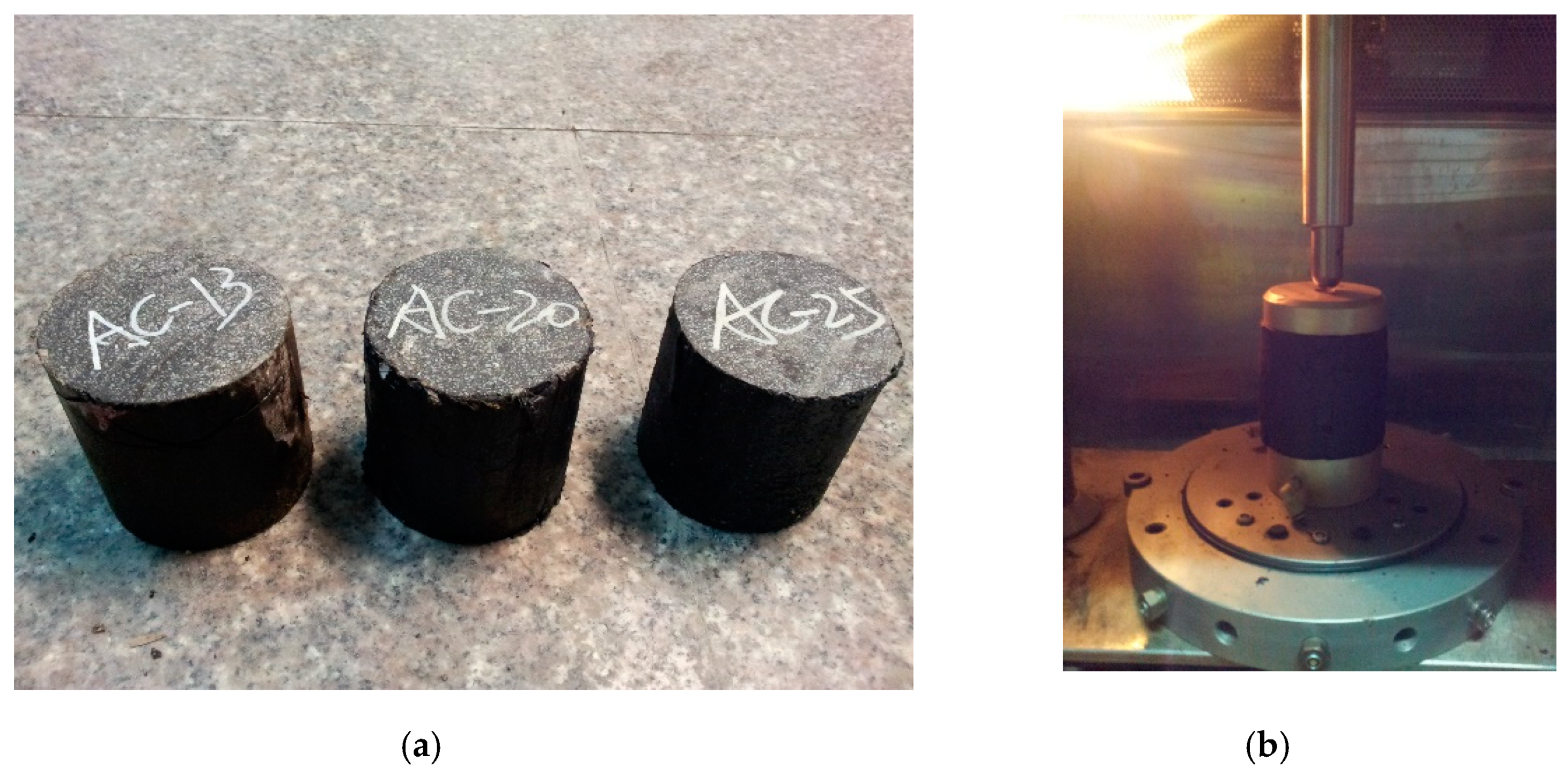




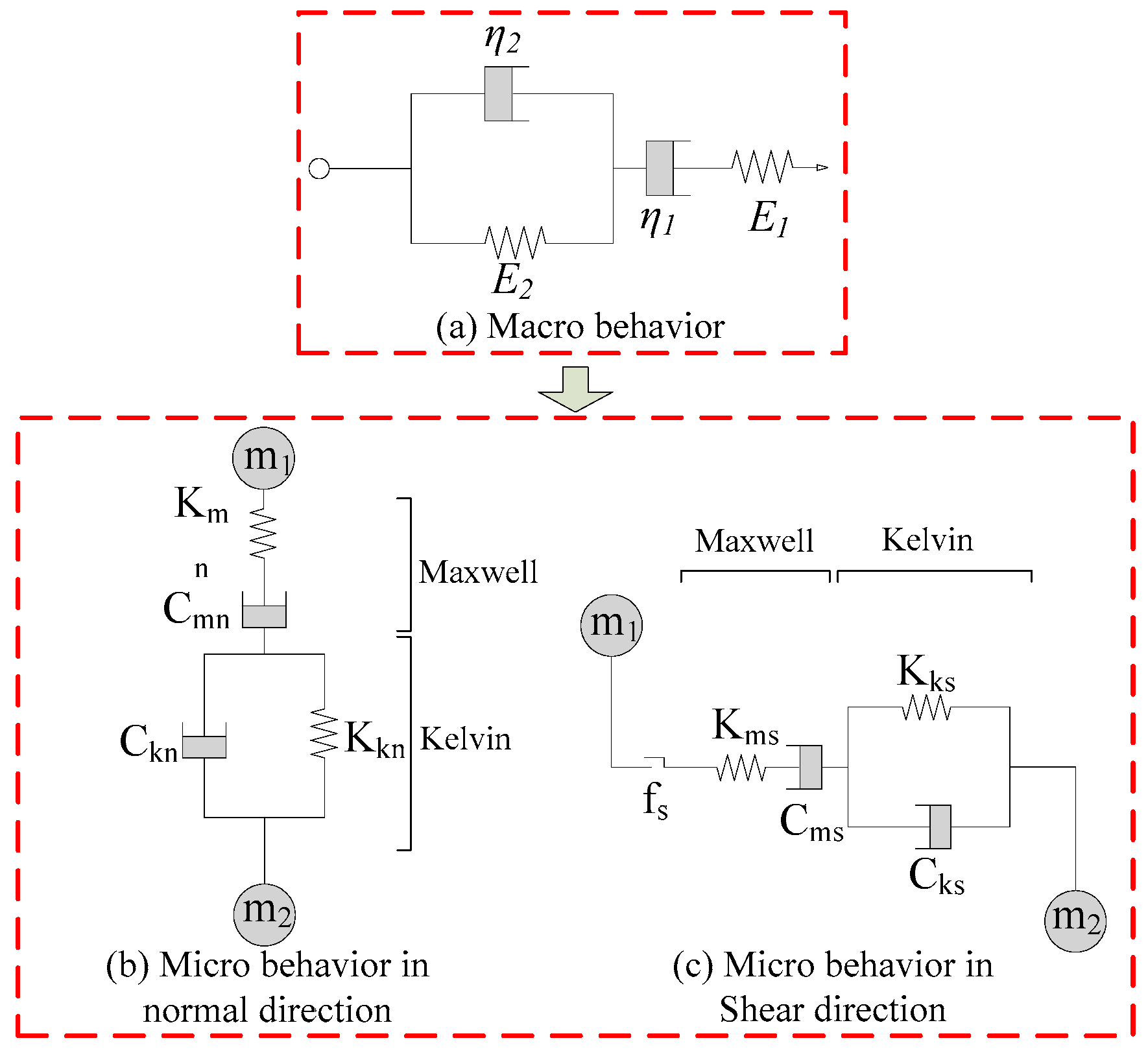

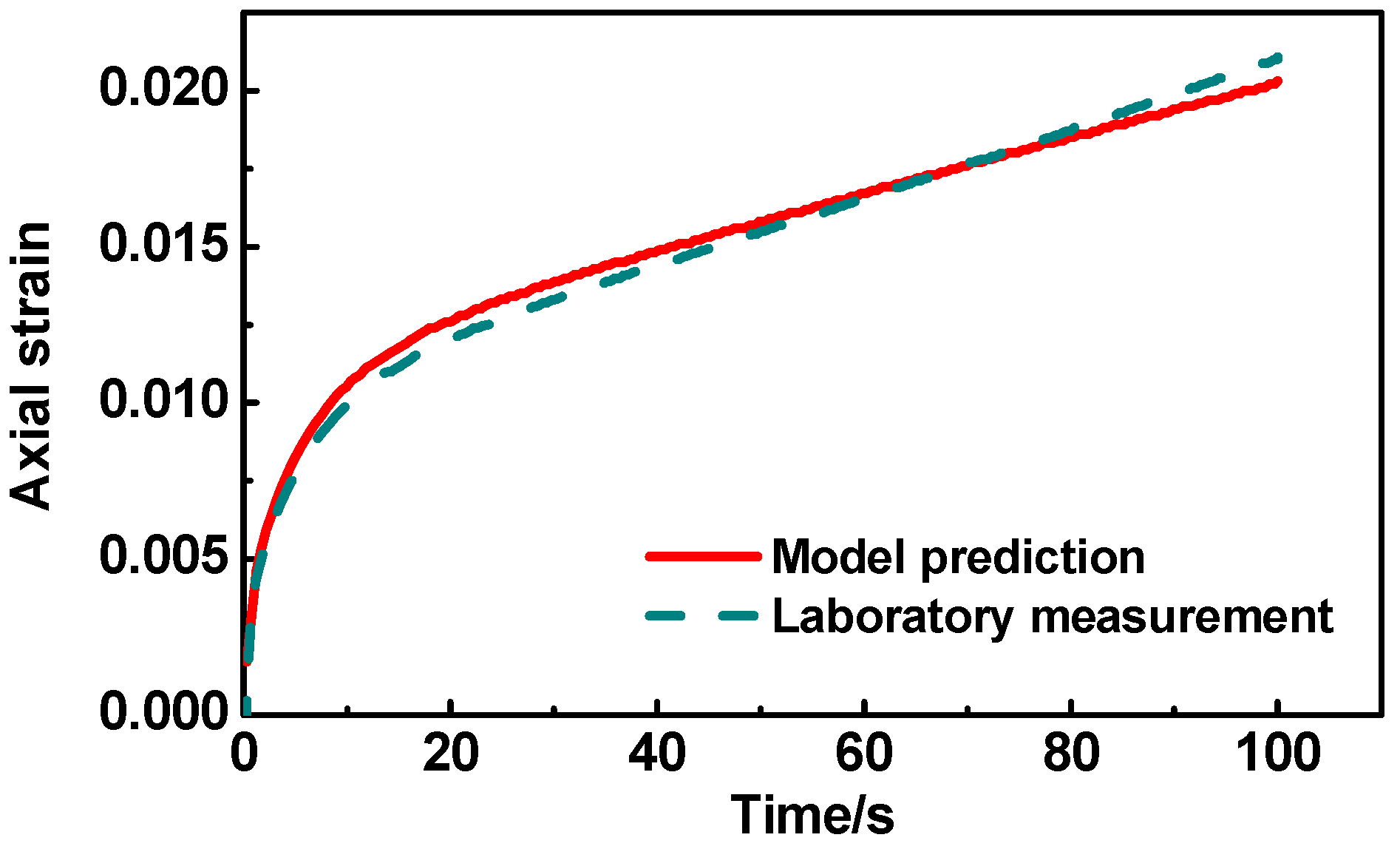

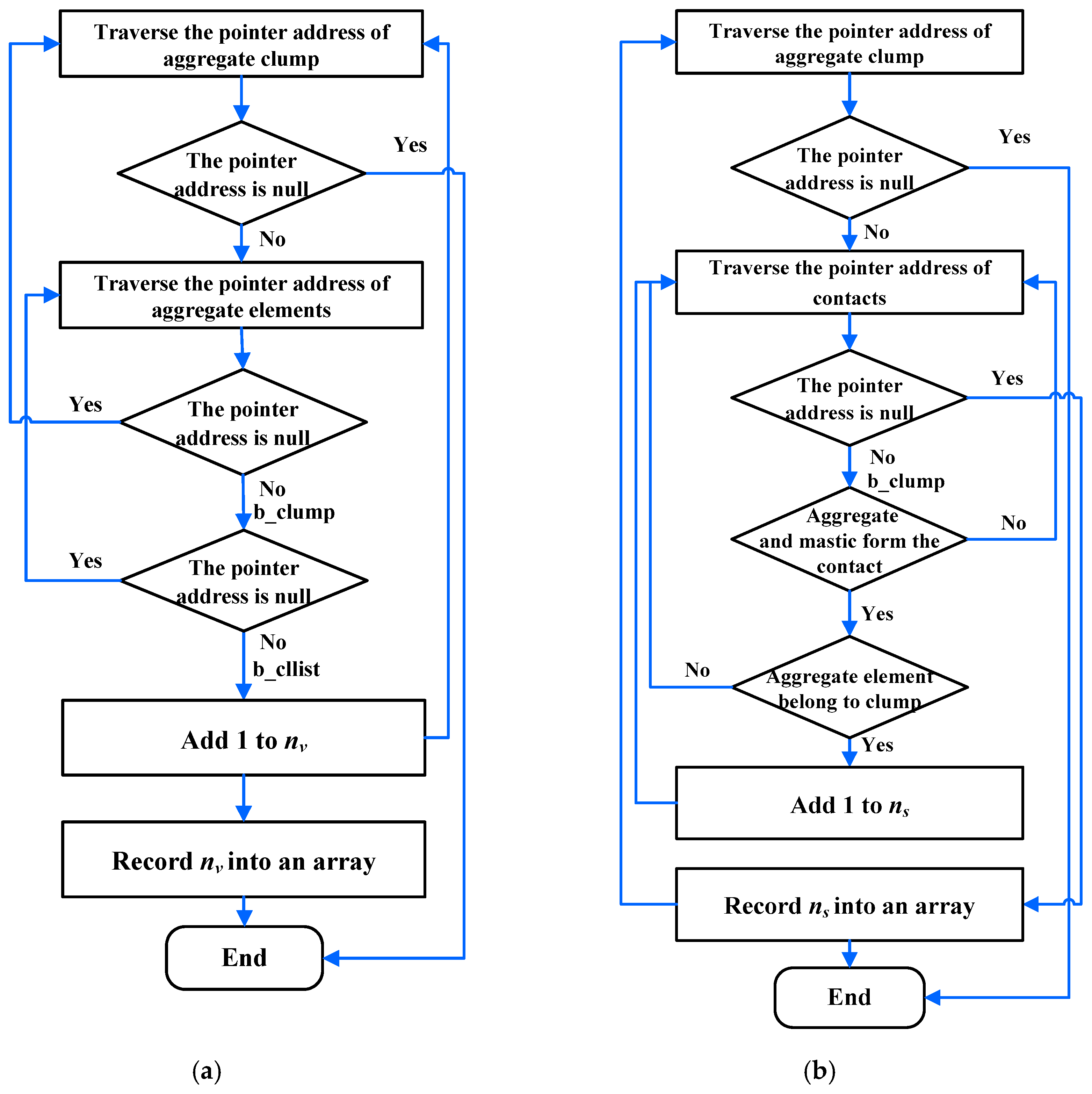
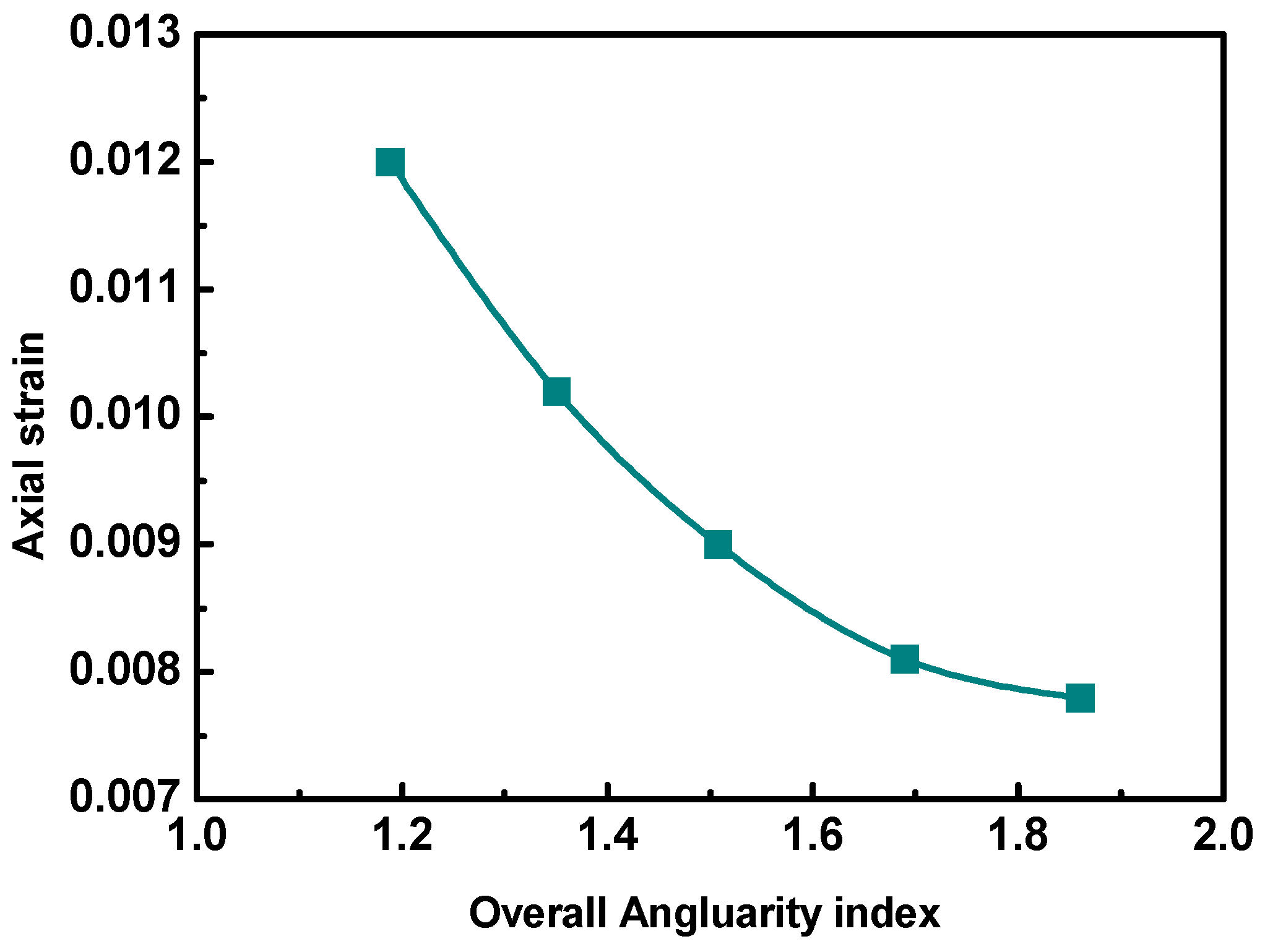
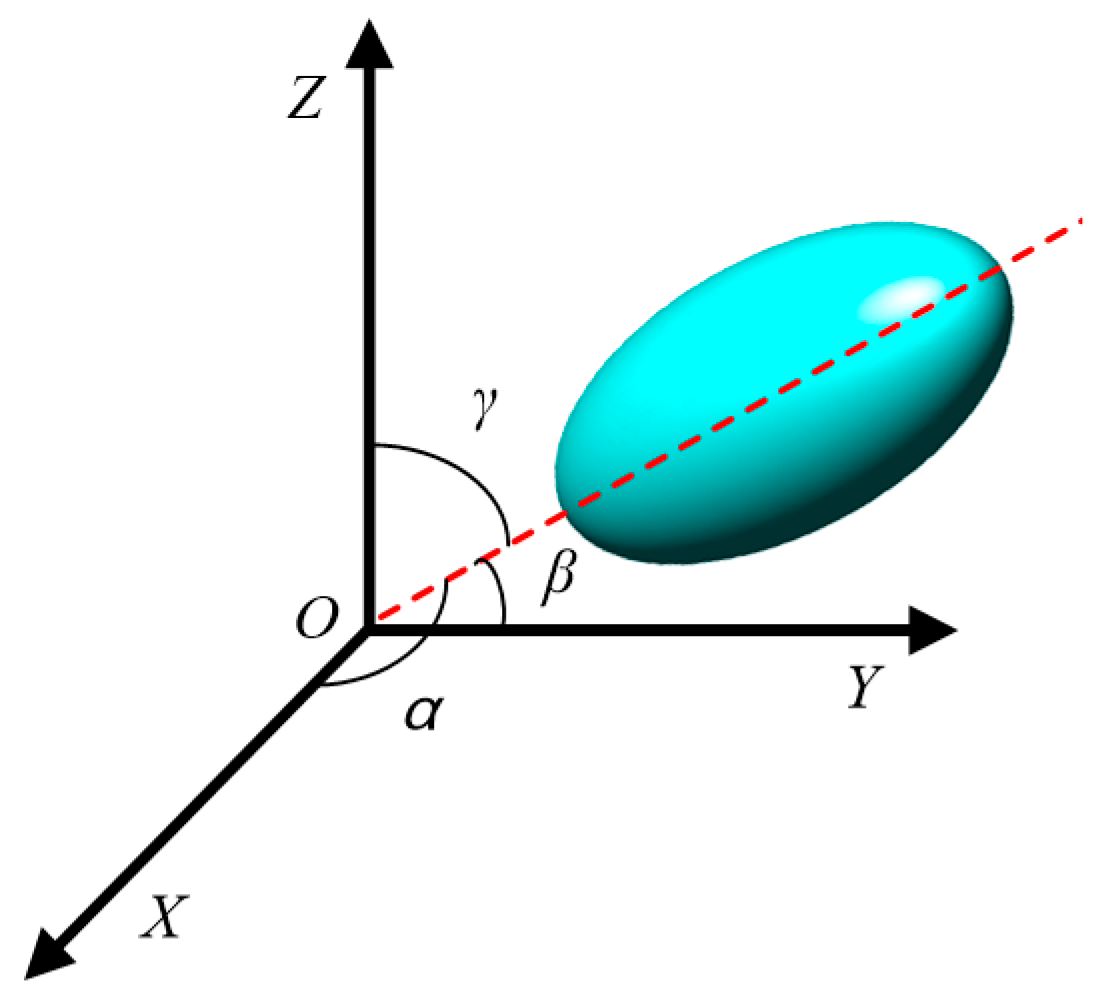

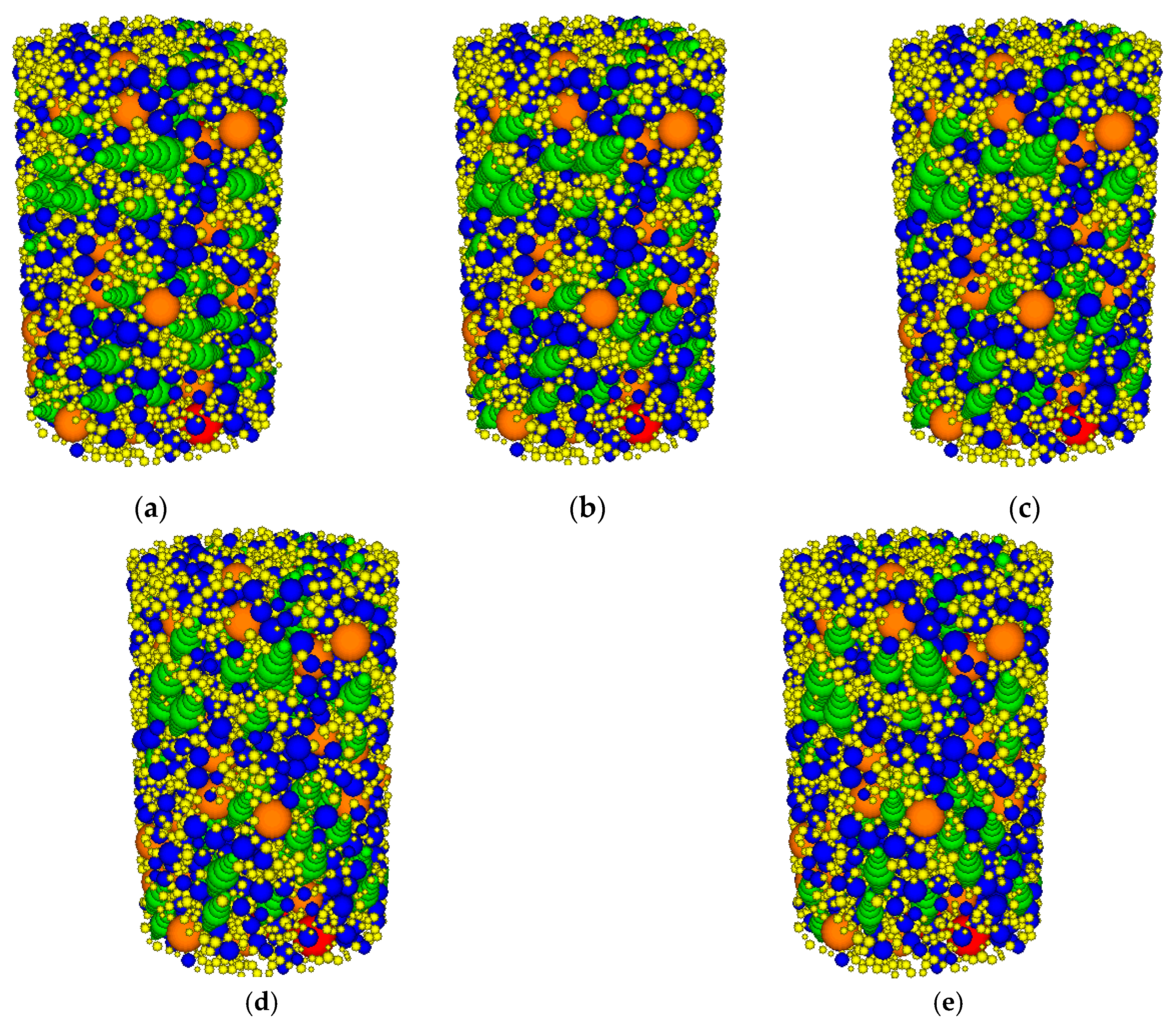

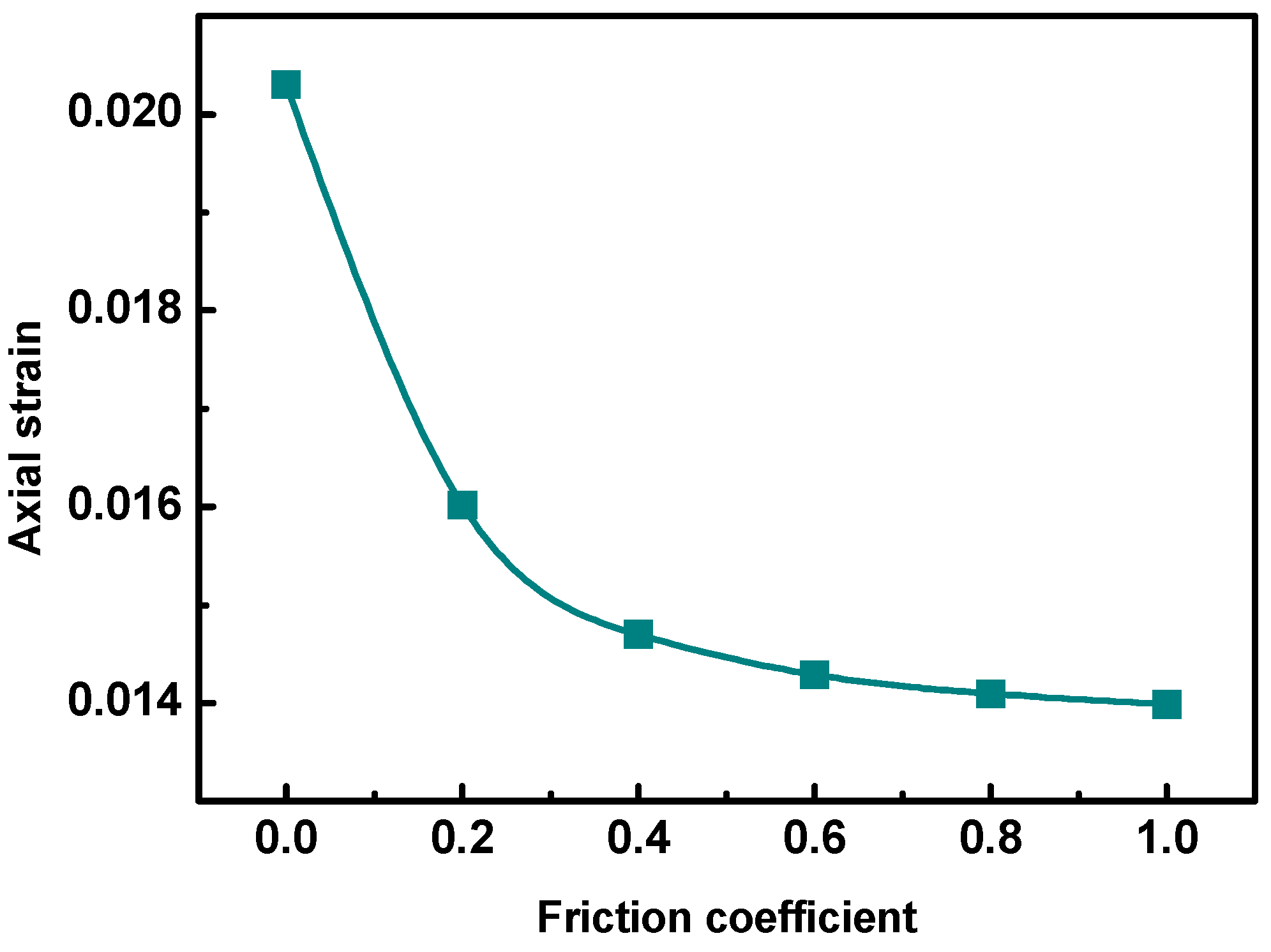


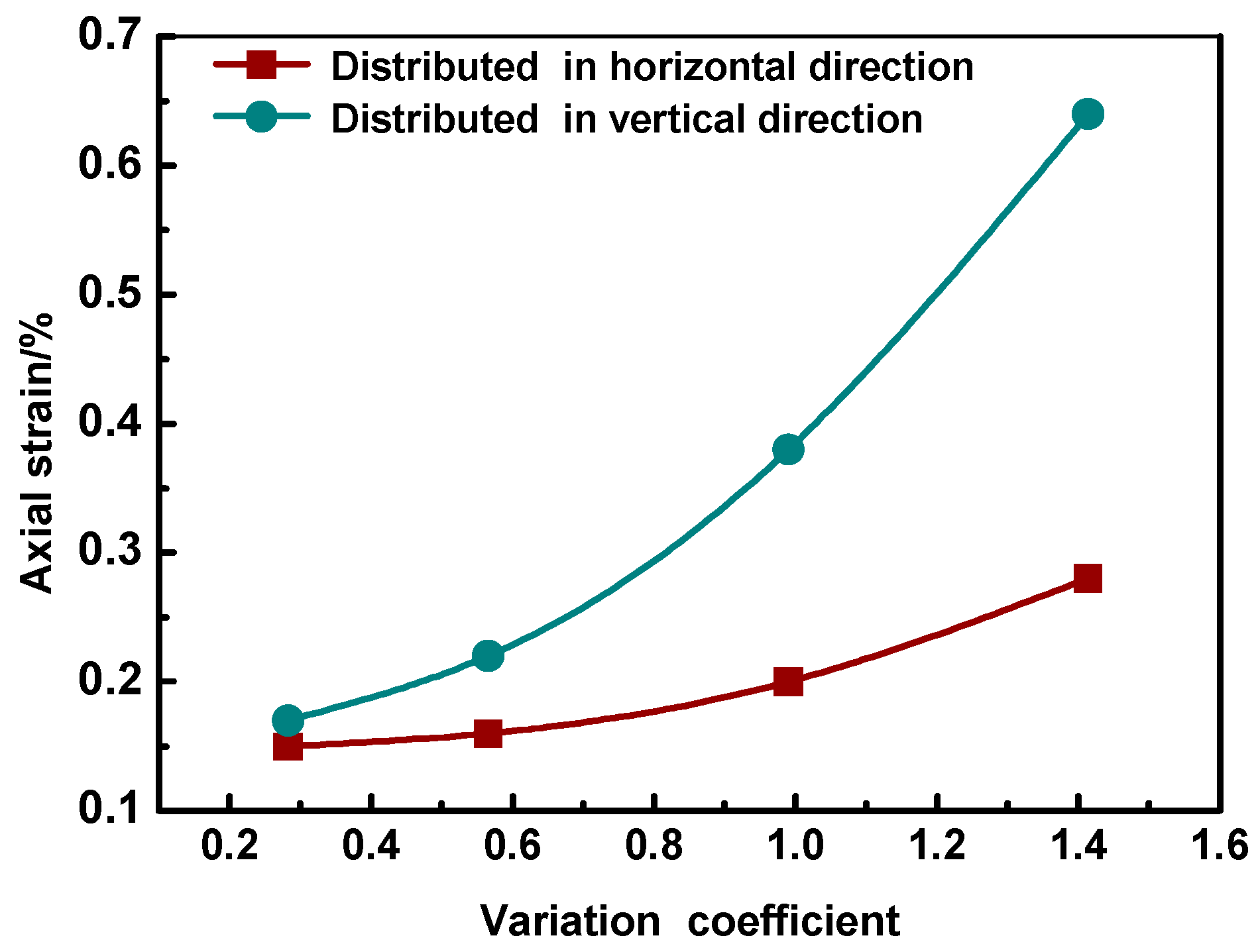
| Asphalt Content (%) | Bulk Density (g/cm3) | VV (%) | VMA (%) | VFA (%) |
|---|---|---|---|---|
| 4.3 | 2.432 | 4.0 | 13.8 | 72.2 |
| Materials | Specimen Size | Test | Load/MPa |
|---|---|---|---|
| Asphalt mixture | Φ 100 mm × H 150 mm (cylinder) L 100 mm × L 150 mm (cubic) | Uniaxial static creep test | 0.7 |
| Asphalt mastic | Φ 100 mm × H 100 mm (cylinder) | Uniaxial static creep test | 0.07 |
| E1 (MPa) | η1 (MPa·s) | E2 (MPa) | η2 (MPa·s) | υ | E (GPa) | μa | υ′ |
|---|---|---|---|---|---|---|---|
| 0.568 | 973.163 | 0.396 | 27.895 | 0.5 | 55.5 | 0.5 | 0.35 |
| Model No. | Volume Distribution Percentage within Each Part (%) | ||
|---|---|---|---|
| Part I | Part II | Part III | |
| Partitioned in the horizontal direction | |||
| #1 | 30 | 30 | 40 |
| #2 | 25 | 30 | 45 |
| #3 | 20 | 30 | 50 |
| #4 | 15 | 30 | 55 |
| Partitioned in the vertical direction | |||
| #5 | 30 | 30 | 40 |
| #6 | 25 | 30 | 45 |
| #7 | 20 | 30 | 50 |
| #8 | 15 | 30 | 55 |
| Model No. | Coefficient of Variation | Axial Strain ε (%) | ε/ε0 |
|---|---|---|---|
| Partitioned in the horizontal direction | |||
| #1 | 0.283 | 0.15 | 1.12 |
| #2 | 0.495 | 0.16 | 1.24 |
| #3 | 0.707 | 0.20 | 1.56 |
| #4 | 0.919 | 0.28 | 2.15 |
| Partitioned in the vertical direction | |||
| #5 | 0.283 | 0.17 | 1.31 |
| #6 | 0.495 | 0.22 | 1.70 |
| #7 | 0.707 | 0.38 | 2.90 |
| #8 | 0.919 | 0.64 | 4.90 |
© 2019 by the authors. Licensee MDPI, Basel, Switzerland. This article is an open access article distributed under the terms and conditions of the Creative Commons Attribution (CC BY) license (http://creativecommons.org/licenses/by/4.0/).
Share and Cite
Zhang, D.; Gu, L.; Zhu, J. Effects of Aggregate Mesostructure on Permanent Deformation of Asphalt Mixture Using Three-Dimensional Discrete Element Modeling. Materials 2019, 12, 3601. https://doi.org/10.3390/ma12213601
Zhang D, Gu L, Zhu J. Effects of Aggregate Mesostructure on Permanent Deformation of Asphalt Mixture Using Three-Dimensional Discrete Element Modeling. Materials. 2019; 12(21):3601. https://doi.org/10.3390/ma12213601
Chicago/Turabian StyleZhang, Deyu, Linhao Gu, and Junqing Zhu. 2019. "Effects of Aggregate Mesostructure on Permanent Deformation of Asphalt Mixture Using Three-Dimensional Discrete Element Modeling" Materials 12, no. 21: 3601. https://doi.org/10.3390/ma12213601
APA StyleZhang, D., Gu, L., & Zhu, J. (2019). Effects of Aggregate Mesostructure on Permanent Deformation of Asphalt Mixture Using Three-Dimensional Discrete Element Modeling. Materials, 12(21), 3601. https://doi.org/10.3390/ma12213601





